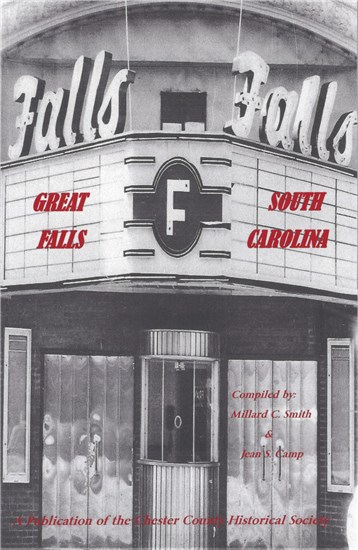The Iswa
While the explorer DeSoto passed through the area in 1540, he did not mention any contact with the Catawba Tribe. It was not until 1566 when Juan Pardo came through that the first mention of the Iswa (People of the River) is noted. In an account of the expedition the town of Issa (Esaw or Iswa) was one among a cluster of villages along a 20 mile stretch of the Catawba River. In 1732, William Byrd II wrote; “It brought you to the first town of the Catawbas, called Nauvasa—
(probably Old Catawba Town) situated on the banks of the Catawba River.” “Besides this town there were five others belonging to the same Nation laying all on the same stream within a distance of 20 miles.”
Revolutionary War
The very first battle in Chester County during the Revolution was fought at Alexander’s Old Field, May of 1780. It is also known as the Battle of Beckhamville. While not a big battle, it did mark the beginning of the resistance in the up country.
The Battle of Fishing Creek took place August 18, 1780 when Lord Cornwallis (Tarlton) attacked Thomas Sumter.
Cornwallis was on Sumter’s trail and caught up with him and his men killed one of Cornwallis’ dragoons. This brought Tarlton riding towards his men and as he crested a hill he could see Sumter and his men below him, apparently undisturbed by their sentries fire. With a shout Tarleton and his men descended upon them. Sumter tried to rally his troops but in the end made a hasty escape and found safety in Charlotte. NC.
Mount Dearborn - “In 1794-95, the federal government set out to build an arsenal/armory on the Potomac and one near the line between the Carolinas. The site near the great falls was selected by Eli Whitney and Major Christian Senf. Thomas Jefferson authorized the purchase of 523 acres from Senator Thomas Sumter. The cornerstone for the arsenal was laid in 1803 by Henry Dearborn, Secretary of War, serving under President Thomas Jefferson. The last soldiers left the arsenal in 1817.”
Electricity!
In 1905, the Southern Power Company, a forerunner of Duke Energy, was incorporated. It began with its first hydroelectric plant called the Great Falls Station. Two spillway dams were constructed to feed the turbines. The dams turned the water away from its natural path which left tons of rock exposed. Shortly after the completion of the Great Falls Station, the company began construction on the Rocky Creek plant. To satisfy the growing need for electrical power, a third plant, Fishing Creek, was completed in 1916. In addition, the Dearborn Plant at the Great Falls site was completed in 1925 with the Cedar Creek Plant at Rocky Creek completed in 1926.
Great Falls Hydro-Electric Power Plant Turbines were filled with concrete in 2020. The Southern Power Company Hotel, razed in the late 1950’s. Location known as the Power Hill, later Duke Power Hill. Engineers, Doctors, and overseers stayed here where 3 meals a day were served. J.B. Duke stayed here during his weekly visits until the railroad was completed. He then stayed in his private train coach which was richly appointed.
Flopeye
There is a section of the Great Falls business district that goes by this unusual name. Originally and officially this section is Elizabeth Heights. The name “Flopeye” has been around since, at least, 1915.
How the name Flopeye came about is the subject of much discussion, however, according to local historians, the original Flopeye was a man with a bad eye. This man would go to sleep in a chair in front of his store just about every day. A girl was walking by one day while the man was asleep and declared, “It’s Flop Eye.”
The Town Built by the Republic Cotton Mills
Construction of the Republic Cotton Mill buildings began in 1909. It was in operation by 1911. It had 175 hands and it turned out cotton cloth for prints.
It was such a successful enterprise that a second plant was built in 1916, The first plant became Republic Cotton Mill Number One. 208 acres had been purchased and soon after the mill building began to rise. At the same time streets were being laid out, houses were being constructed, and the town began to take shape. The first village for employees had 75 houses ranging in size from 3 to 6 rooms and were equipped with water, sewerage. and electric lights.
In the beginning the company had no truck and used mules and wagons for all the hauling.
In 1948, Republic Cotton Mills merged with J.P. Stevens & Company, Inc. In addition to the mill buildings and the housing, the company owned a department store with groceries, dry goods, a pharmacy, and millinery goods. They even had a department that handled coffins and caskets! There was a meat market nearby the main department store building. There were no hard surfaced roads and the Seaboard Air Line Railroad offered the quickest way to get to Great Falls. There were two daily outgoing and incoming passenger trains.
1923 Republic Cotton Mill #3 - a silk mill production. The building had a unique saw-tooth roof. There was Village housing and a neighborhood grocery store.
J.P. Stevens & Company, Inc., remained the major employer for most of the 20th century. All three mills closed in the early 1980’s with Mill #2 the only one still standing.
The history above is out of:

Great Falls, South Carolina
Complied by: Millard C. Smith & Jean S. Camp
A Publication of the Chester County Historical Society
Copies of the publication are available at Town Hall